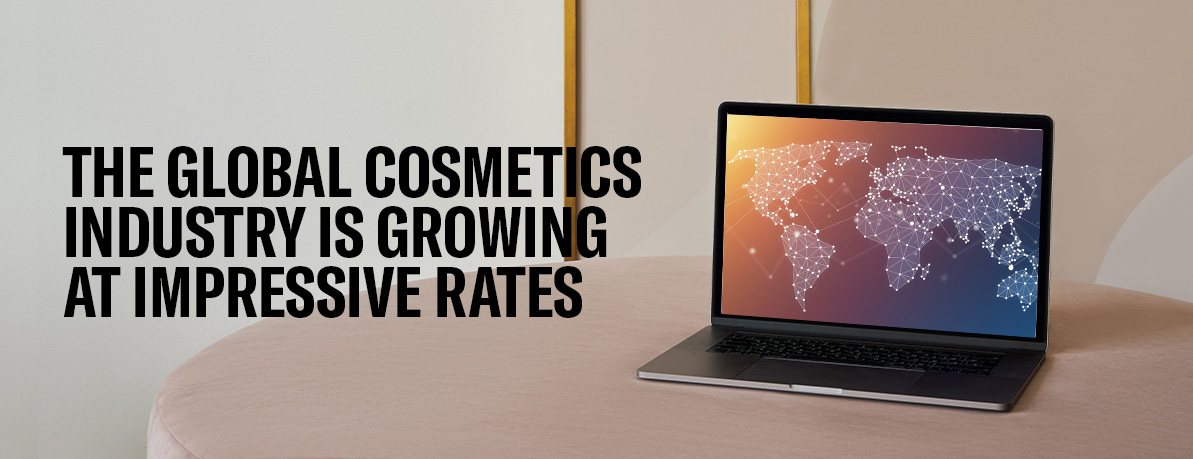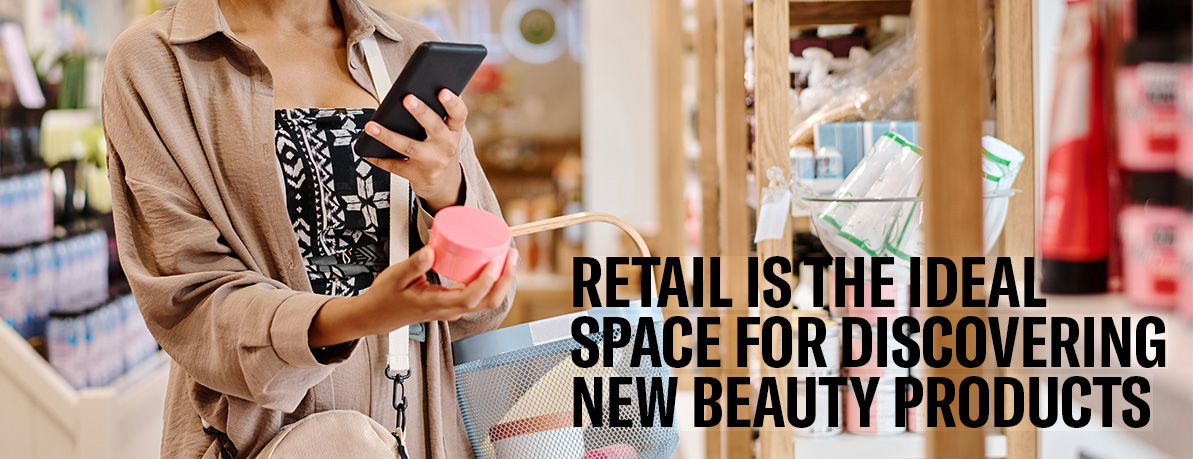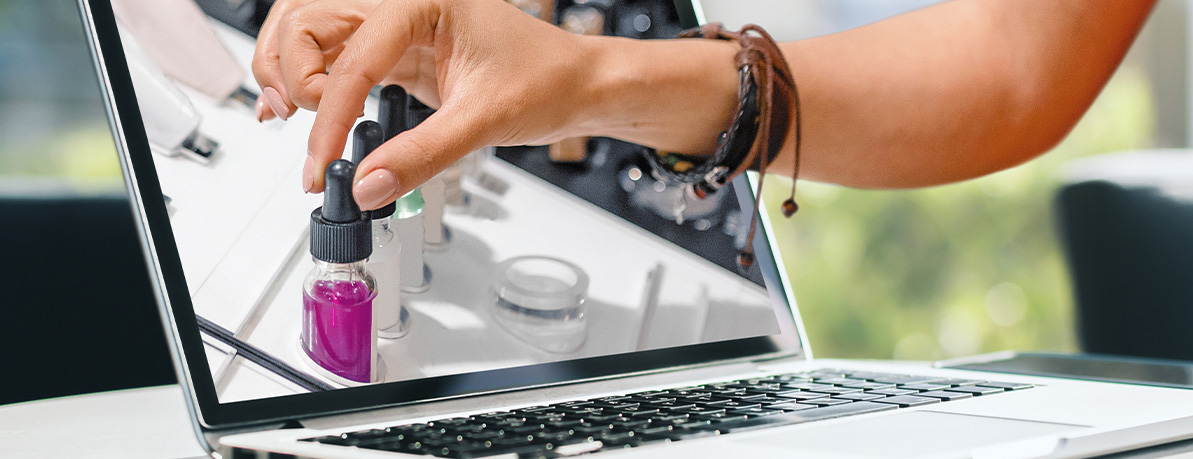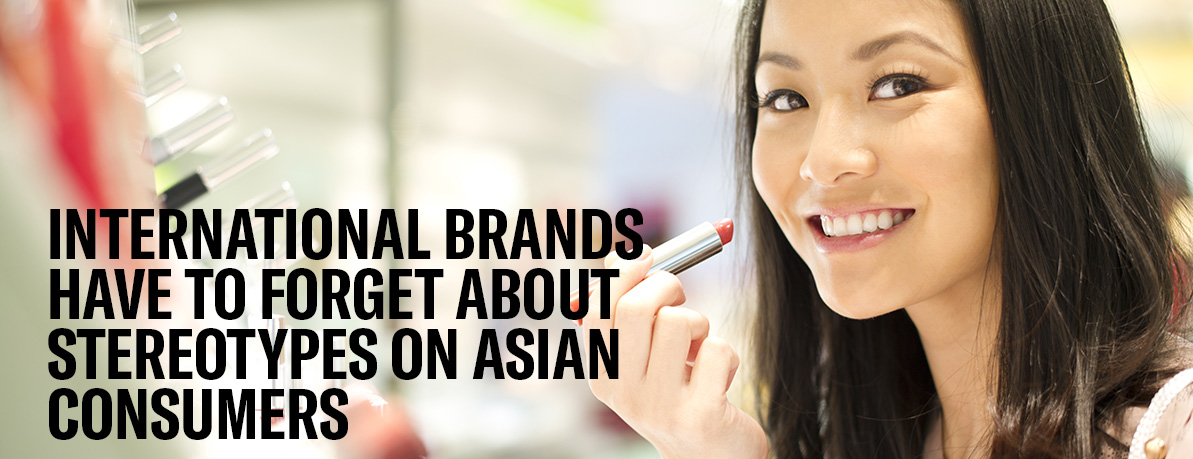NEWS > 13 May 2024
The global cosmetics industry is growing at impressive rates. According to the market research company EUROMONITOR INTERNATIONAL, in 2023 the sector registered a total value of over $617.2 billion. For 2024, it is projected to reach $670.8 billion with a 9% annual growth. Comparing these data to the value recorded in 2018, it emerges that in the latest 5 years the beauty industry has grown by 19.9%, despite the pandemic and the complicated international scenario. For the next 4 years beauty will continue its steady increase, with an average annual growth for the 2024-2028 period of 9%.
In such a competitive and dynamic scenario, the USA leads the ranking: the cosmetic market in the country reached $128.9 billion in 2023, and a 5% growth is expected in 2024, reaching $135.7 billion. China is growing at lower rates compared to the pre-pandemic period, but it still remains the second market worldwide, and it is characterized by incredible changes in trends, consumers behaviour and channel distribution. Asia-Pacific and ASEAN regions are growing constantly becoming increasingly strategic for international players.
Emerging in the international scenario is Africa, too, led by an incredible demographic growth. Multinational companies are looking at the region with interest, and at the same time local brands are gaining recognizability.
During Cosmoprof Worldwide Bologna 2024, as part of the educational sessions of CosmoTalks, these three areas and their business opportunities have been debated thanks to the commitment and contributions of prestigious experts and key players.

US market is the core business focus nowadays for stakeholders. Presenting the educational session “The extreme makeover of American Beauty Retail” Kelly Kovack, Founder and CEO of the beauty reference Beautymatter, shared interesting insights on the most impacting changes in the region. The old distribution model has fallen away, and today US consumer has become the reference distribution channel. “As a brand, you must be present where they are and when they want you to capture their attention,” highlighted Kovack.
McKinsey & Company reported that the beauty in the US is expected to record a value of $114 billion by 2027. This is why stakeholders from all over the world are refocusing on the American market. In 2024 forecasts state that the cosmetics sector will reach a value of $100,3 billion with a CAGR in the period 2024-2028 of 2,4%. The consolidation and fragmentation of the retail market is creating great opportunities. The prestige channel in 2023 recorded the third year of double-digit growth, with a +14% rate compared to 2022 and a total value of $31,7 billion in sales. US prestige beauty is growing compared to mass market in all segments: make-up, skincare, hair, and fragrance. At the same time, masstige brands are increasing their rates: although the smallest in size representing about 11% of market sales, they are growing the fastest in dollar volume reaching a value of 16%.
Understanding what the marketplace looks like today and its opportunities is crucial for brands. If in the old beauty paradigm brands had to make choices about their distribution channels, today lined have come blurred, and they are required to sell across different channels based on wherever their customer wants to shop. “For a brand it is important to understand what you are, the expectations of the market, and how to reach your customer, who must be the focus of your strategy”, underlined Daina Nadler, Vice President, Sales & Marketing of Bigelow Trading, one of the best representatives of US traditional retail. “Each market and distribution channel requires a different approach; it is vital to differentiate your message and your strategy.”

John Cafarelli, Chief Executive Officer of Beautymatter, who moderated the roundtable, highlighted that 87% of beauty enthusiasts in the US still prefer shopping in-store, and 80% of them go at beauty-specific retailers. “People must enjoy being in the store. Beauty is a fun and interactive sector, and as a retailer it is strategic to create an environment where consumers want to come in and engage, and the support of brands in achieving this goal is fundamental,” stated Noah Rosenblatt, President of North America – Space NK of Space NK. “Brands need to be prepared to support retailers in driving traffic to the store and communicating a great story behind their product.”
“People enjoy shopping in-store, and beauty has become an affordable luxury for consumers,” echoed Jeanne Tamayo, Business Development Manager for Cosmetics of H-E-B, a grocery, and mass retailer with five hundred stores in Texas and throughout Mexico. “As a retailer we must create a representation which must be accessible and fun for consumers, and we must communicate the brand identity with dedicated images and colour references. It is important to reinforce the connection between a brand and its customers.”
Online sales are becoming a strategic factor, and Amazon plays a key role in this scenario. Amazon is going to overtake Walmart as the largest beauty seller in the US, covering 14,5% of the market. It has become the ideal stage where to discover new beauty products. 51% of consumers start their product search on Amazon, and 18% of shopper state that they prefer to shop on Amazon, as reported during the CosmoTalks session by Solomon Hedaya, Chief Growth Officer of Front Row. Everyone is shopping, but navigating Amazon is complex, and brands need to manage it properly. “Every brand can come on Amazon, but not all brands are successful on Amazon,” highlighted Hedaya. “Amazon is an open marketplace with an endless show, and it has become hyper competitive. In the retail channel, retailers share your story and hep you connect with consumers because they invest on you; in Amazon it is the brand who must make the investment. Amazon is a good channel for launch, but you must make sure you have a talented team, or a great partner, and you must work on consistently building content, communicating with your community, engaging consumers, having a strong social media presence.”
The fluidity from channel to channel in the US market is the main issue for brands who want to do business in the region: there is not a unique successful path to follow, but each brand should stay authentic, be realistic, listen to consumers and be flexible, analysing the best channel for its business and being open to new opportunities. TikTok seems to be a new player in this scenario, too: TikTok shop has been launched last September 2023, and it seems to be a reliable source of revenue, particularly for independent brands. Anyway, this new potential channel should be analysed compared to the characteristics of US consumers. Solomon Hedaya underlined that there is a big and constantly evolving discussion on the social media platform. 70% of Gen-Z activate and mostly use TikTok as a social media platform, and there is a strong connection between the platform and e-commerce, above all Amazon. As an e-commerce channel itself, TikTok must overcome big challenges such as logistics, but it is undeniable that it can be a good testing ground for brands, not as a unique distribution solution but as part of a multichannel marketplace strategy.

If social shopping is still a nascent phenomenon in the US, it is a huge player in China, reaching the value of $45,5 billion in 2023. According to Nielsen IQ, compared to offline retail, which is slowing down of 4% in the region, e-commerce, and social commerce, above all Douyin, are growing respectively at a rate of 9% and 57%. “China is a resilient beauty market, and despite all difficulties after the pandemic it is still the second global market, with lots of challenges for international suppliers”, underlined Gautam Seth, Vice President of Nielsen IQ BASES Lead for APAC & MEA, who took part as a speaker in “Evolving Beauty: Navigating the Asian market post-pandemic”, one of the round-tables held during Cosmoprof Worldwide Bologna 2024. “Growth in China is coming above all from local players, as they are increasing their sales thanks to local ingredients, research and sourcing processes,” pointed out Seth. “What makes it difficult for big international brands when entering the Chinese market is the fact that they are approaching it in traditional ways, looking for retail and distributors, without considering social commerce, which is used by younger generations. Brands must rethink how they enter the beauty market in China.”
When focusing on trends in China, they are almost the same which are characterising today the global beauty industry, such as a strong attention on well-being and on sustainability, but what is having a strong impact is the attention on cultural heritage. “We could name it a local pride,” underlined Chloe Arjona, Beauty Director of the trend agency Nellyrodi. “They reinterpret their beauty traditional culture with a modern approach.” During and after the pandemic consumers in China rediscovered their traditions and ingredients, and this led to the growth of local brands, which are becoming more curated. For western brands it is difficult to understand the local culture and how to integrate into it; local brands are big competitors in the domestic market, but thanks to their evolution they are also exporting their products, claiming for a global presence.” “The Chinese market is changing every 3 to 4 months; international brands have to forget about stereotypes on Asian consumers and need to check how they have evolved”, echoed Seth.

Another crucial factor to deal with when focusing on Asian market in general is consumer’s expertise about ingredients and beauty products. The massive impact of user-generated content and of platforms such as Little Redbook changed the narrative for brands. Retailers had to react to the needs of pro-active consumers. “Technology is the new way to engage consumers, as well as new product categories, such as home devices,” underlined Kim Da Jeong, Cosmetics Buyer of Lotte Department Store. Korean market relies on consumers coming from foreign Asian countries, and after the pandemic the Korean travel retail focused mainly on skincare and home devices. “In Korea there are more than 40,000 brands, and with such an offer Korean consumers developed really high standards”, highlighted Jina Lee, Ceo & Founder of Urang. “Brands have to refer to scientific efficacy when they speak about ingredients and products: Asian consumers are so educated that brands have to pay attention about the claims they use.”
The expertise of Chinese consumers has guided the adaptation process of a Thai brand such as Mistine to local needs. “Suncare market in China grew up by 12% in 2023, with higher rates compared to skincare, which recorded a 5% growth”, reported Chris Kam, Overseas Business Development Director of Better Way. “Consumers’ education about suncare products in China is rapidly increasing, for this reason we had to develop specific textures and formulas, creating them with Chinese scientists, R&D experts, and suppliers.”
China has one of the most stringent regulations about ingredients and testing in beauty, together with the EU. Being aware of what is happening on the market, thinking local and pay attention on strict regulations are the key elements to build good references and differentiate among competitors. As underlined by Charlie Gu, Deputy Publisher of Jing Daily, who moderated the panel discussion, “China and Asian markets are dynamic, resilient and they can be incredible rewarding if you do things in the right way.”

There is a new frontier in the beauty industry: Africa. The African beauty market is still an untapped market, which has remained almost ignored by the biggest corporations until now. Today the beauty industry in Africa is expected to grow at incredible rates, thanks to the growth of African population and of a larger middle class with spending power.
The African beauty market was analysed and debated during the latest edition of Cosmoprof Worldwide Bologna. During the CosmoTalks session “Investing in the African beauty industry: why international companies are swarming in”, experts and players shared their experiences and suggestions to play a role in the development of African beauty. As underlined by Anien Botha, editor of the magazine Beauty South Africa and moderator of the panel, “Africa is a young market, and despite all stereotypes young generations in the continent are increasingly fashion-conscious, still untrained but interested in using beauty products. This scenario offers great opportunities not only for local brands, but for international players as well, and we are seeing an unprecedent influx of investments from foreign brands.”
The growth of Africa and especially of the Sub-Sahara region follows the positive development of the beauty industry globally. According to Statista, in 2023 the beauty market in Africa generated a value of about $62 billion, and by 2028 it is supposed to expand further and reach $83 billion. If the annual growth average rate of the cosmetics industry worldwide is expected to be 3%, Africa is expected to reach a 6% CAGR. The best performing markets are Nigeria, with a value up to $8 billion in 2023; Egypt, which last year generated a revenue of $7 billion; Ethiopia, with a revenue up to $5 billion in 2023; South Africa, with $4 billion in 2023; Kenya, Tanzania and Uganda, with a revenue up to $3 billion. In Nigeria forecast revenue is growing from $8 billion in 2023 to $10 billion in 2024 and $16 billion by 2028. Leading markets will remain USA, China, and Japan, but African countries are climbing the ranks reaching higher positions. Nigeria is currently the 18th market globally, but by 2028 it is expected to take the 10th spot. Dominique Petruzzi, Research Expert for Non-food FMCG and Retail of Statista, pointed out the reasons for this rapid growth: “The most influencing elements are the increasing urbanization and the expansion of the middle class, but it is important to note as well that among the over 1,3 inhabitants the average age is about 19-20 years old. Gen-Z and young consumers in Africa are a massive market with growing purchase power.”
“Speaking directly to young consumers is vital for a brand in Africa: they are the present, near future and large future consumers,” underlined Suzie Wokabi, Founder of SuzieBeauty & Sb Dada. “Young consumers are beauty-hungry, and they are the protagonists of a digital revolution, too. They are constantly on social media, above all on TikTok and Instagram. If you want to reach them as a brand, it is compulsory to be present across all platforms, with the correct message for the rights audiences.” The greatest impact of digitalization and innovative technologies in the continent is undeniable: nowadays people have mobile phones and access to the internet, and they use these tools to discover products following content creators. “It is digital which is educating people in Africa,” highlighted Sneha Mehta, Co-founder and CEO of Uncover, from the CosmoTalks stage. “Consumers’ education is critical in Africa, even the biggest markets in the region are nascent realities in terms of purchase behaviour. Technology has a significant role to play in breaking knowledge barriers and bringing education.” Educating local communities in using excellent quality and appropriate products is important. Africa is the hottest and sunniest continent in the world, but only 30% of women wear sunscreen products. In Nigeria, 70% of women are using hard bleaching products to whiten their skin. “As a skincare brand we feel a huge responsibility in educating consumers to take care about their health, but we have also to make people accept and love themselves and the way they look,” emphasized Mehta.

“Africa is not at all a poor continent: people are willing to spend on beauty, they are connected to the web to get information, they only need to be educated on a more scientific-based approach and to trust on the efficacy of the product”, echoed Yara Mansour, General Manager of L’oreal Professional Product Division Africa. “International brands can play a key role in this evolution, but they need to care about the necessity of local consumers and to pay attention on all ethnicities. Activating the brand in the correct way, with an appropriate language, with specific visuals and the right influencers and partners is a key factor for international companies such as L’Oréal.” Mansour explained that L’Oréal launched a scholarship project in Kenya to train hair professionals, provide an education to local young talents, and create job opportunities.
Analysing the distribution channels nowadays, in East Africa 98% of sales still run on brick-and-mortar, but e-commerce will play a strategic role, especially in the beauty and personal care sector, reaching revenues of 5,3 billion USD by 2028 according to Statista. There is still a lot to do, but something is already changing: leaders in technology are landing in the continent, local governments are creating suitable infrastructures, payment gateways are becoming more secure. “The main issue is consumers’ trust,” underlined Galib Virani, Chief Executive of SuperCosmetics. “People still want to touch the product and experience it physically. The omnichannel distribution model will be the main driver for growth, with the purchase process being complemented online thanks to AI and AR tools. There is still a long way to go, but if we succeed Africa will follow the path of China and India.”
For what concerns the most successful products in the continent, hair care is leading the market due to both cultural and practical reasons. In 2023 hair products generated a revenue of $1 billion, and women in Africa spend six times more than Caucasian women for their hair. Skin care is growing, too, above all for what concerns sunscreen proposals, moisturizing products, anti-aging, and melanin skin offer. Sales in fragrances are increasing among young aspirational and educated consumers. Colour cosmetic is a smaller category in terms of revenue, but it is developing faster thanks to the new instagrammable and experience-oriented approach of younger consumers. Local consumers are also becoming more interested in sustainability, with a specific attention on recyclable proposals and low-impact beauty products.
There are great opportunities for local brand as well as international companies, provided that technologies of foreign brands are correctly customized for local consumers, respecting their ethnical needs and co-developing appropriate formulations. The next steps in the agenda to develop African beauty are linked also to the growth of the local supply chain. Investors are already pushing local and international brands to play a more tangible role in developing new job opportunities and give room to local entrepreneurs, contract manufacturers, facilities and technology providers, formulators, and researchers. The lack of infrastructures, difficult trading conditions from one country to the other, as well as different currencies, are still impacting challenges to overcome, but connect local manufacturing to brands in Africa will help confirming the continent as a leading market in the next future.